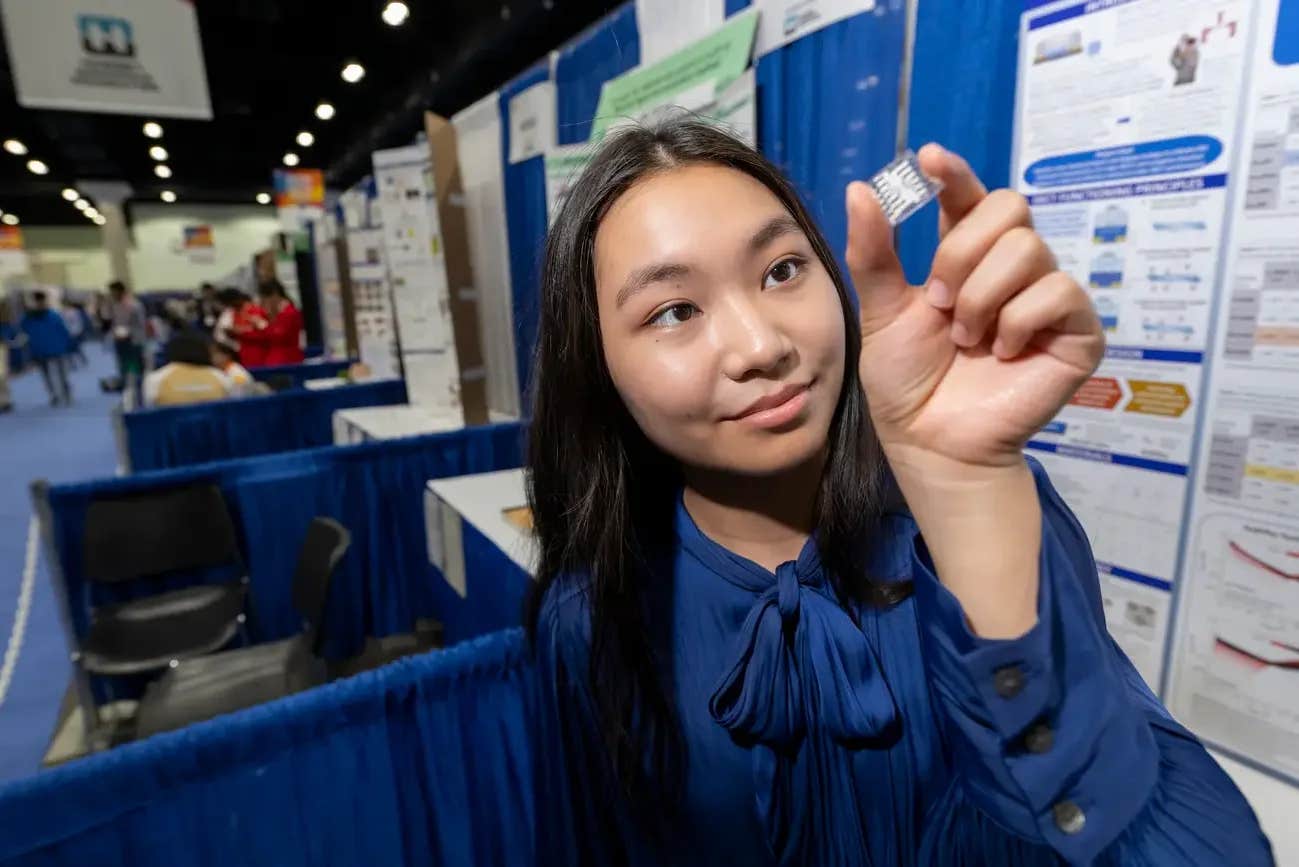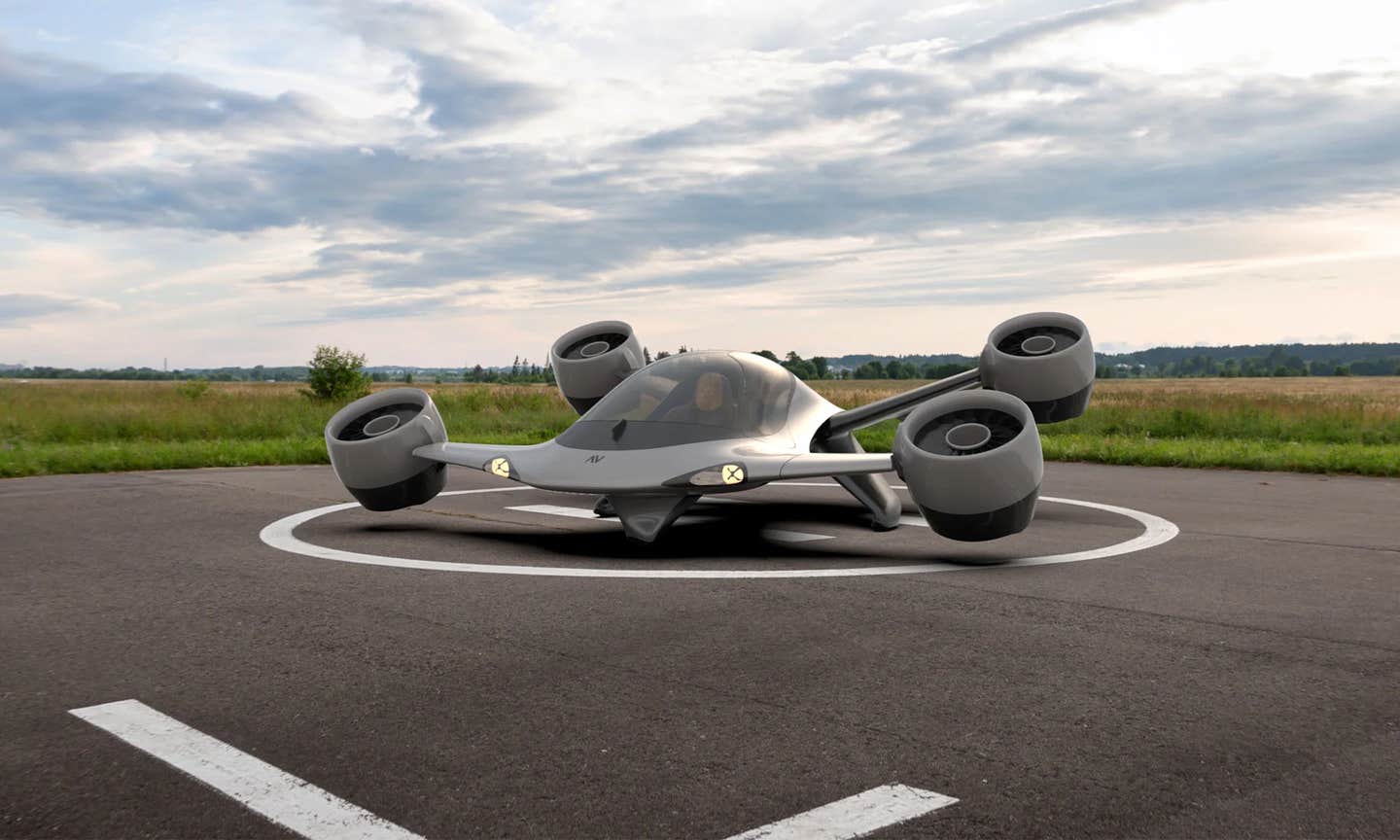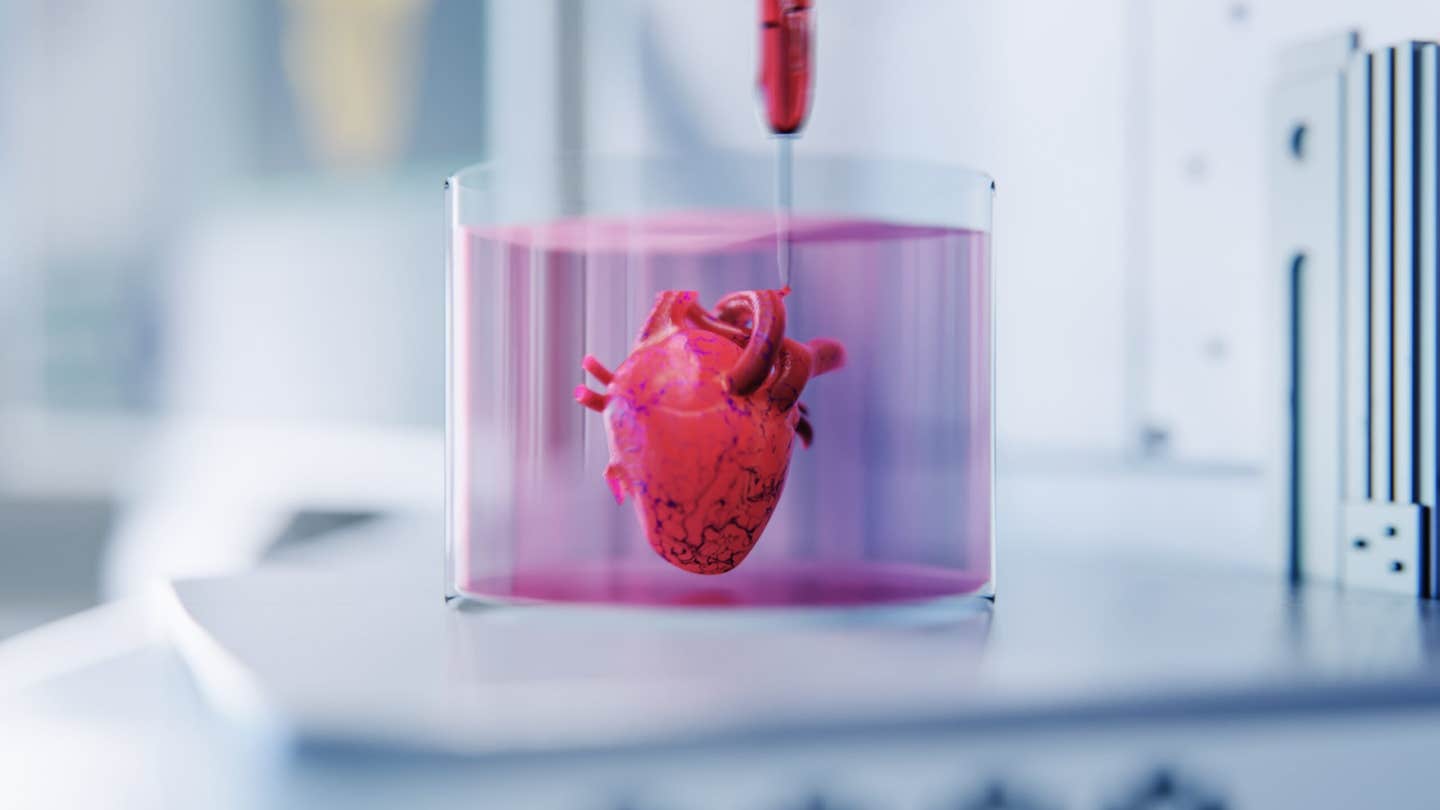16-year-old student’s breakthrough could revolutionize biomedicine
Her biomedical research aims to enhance organic electronic devices, potentially revolutionizing medical implants and diagnostic tools.

Her research aims to enhance organic electronic devices, potentially revolutionizing medical implants and diagnostic tools. (CREDIT: Chris Ayers/Society for Science)
Grace Sun, a 16-year-old high school student from Lexington, Kentucky, is not preoccupied with getting her driver's license like many of her peers. Instead, she has dedicated herself to a groundbreaking project in biomedicine. Her research aims to enhance organic electronic devices, potentially revolutionizing medical implants and diagnostic tools.
Sun's innovation focuses on organic electrochemical transistors (OECTs), which could significantly improve the compatibility and functionality of medical implants within the human body. These devices, being soft and flexible, present a promising alternative to traditional silicon-based devices for applications in heart and brain implants.
Recently, Sun's work was recognized at the Regeneron International Science and Engineering Fair (ISEF), where she received the top prize of $75,000 for her research. "They called my name. I thought they got the wrong person. I was like, is there another Grace up here?" she said backstage at the awards ceremony. Despite her initial disbelief, Sun quickly composed herself to explain her research to the audience.
OECTs, as Sun explained, currently face performance issues, particularly instability within the body. This instability is problematic for bioelectronics intended for implantation. However, OECTs' potential lies in their accuracy, speed, and performance, as they can process body signals that traditional electronics cannot. Furthermore, being made of organic materials makes them safer for use in medical applications.
Sun's research aims to improve OECTs' performance, a crucial step toward their commercial viability and widespread use in the coming decades. Her project involved "doping" the transistors with organic salts to enhance their electrical properties.
She discovered that tetrabutylammonium chloride significantly improved the devices' amplification abilities, sensitivity, signal-to-noise ratio, and switching speed. Specifically, her findings showed a 97% improvement in amplification performance and a 77% increase in switching speed.
Related Stories
These advancements are vital as they enhance the overall performance of OECTs, paving the way for new biomedical devices capable of detecting early disease markers. Sun envisions these devices being used in various applications, such as monitoring biochemical changes through sweat or providing accurate blood-alcohol level readings.
ISEF, known as the world's largest pre-college STEM competition, brings together nearly 2,000 students to showcase their research. The event, often described as the "Olympics of science fairs," offers a platform for young scientists to present and defend their work. This year, ISEF awarded a total of $9 million.
"This was our number one project, without a shadow of a doubt," said Ian Jandrell, a judging co-chair for the materials science category at ISEF. He emphasized the judges' unanimous agreement on the significance of Sun's research and her ability to articulate and defend her findings.
Sun's journey to this achievement was marked by dedication and hard work. For over six months, she spent long hours in a lab at the University of Kentucky, often leaving school early to continue her experiments. Her teachers were supportive, understanding the importance of her research and granting extensions on her assignments when necessary.
Sun's ultimate goal is to see her improved OECTs commercialized and integrated into everyday medical practice. She hopes her work will lead to the development of non-invasive diagnostic tools and safer, more effective medical implants. "Hopefully I can make some sort of commercializable breakthrough, like what I'm trying to do now with these devices," Sun said. "If possible, I do want to start a business so that I can get them into the real world in industries to impact more people directly."
Her research at ISEF, although not peer-reviewed like studies in established scientific journals, exemplifies the competition's mission to engage students in the scientific process. By conducting their own research and defending their findings, participants like Sun gain valuable experience in scientific inquiry and communication.
The impact of Sun's work extends beyond the competition, offering a glimpse into the future of biomedicine. Her advancements in OECT technology could lead to earlier disease detection, improved patient outcomes, and the development of new, less invasive medical treatments. As Sun continues her journey in chemical engineering, her contributions to the field could one day transform medical practices and improve the lives of countless individuals.
Sun’s story is a testament to the power of dedication, innovation, and the potential young scientists have to transform the future of medicine. Her journey, from a high school lab to the grand stage of ISEF, illustrates the profound impact that scientific curiosity and perseverance can have, not just in winning prestigious awards, but in paving the way for groundbreaking advancements in biomedicine.
Note: Materials provided above by The Brighter Side of News. Content may be edited for style and length.
Like these kind of feel good stories? Get The Brighter Side of News' newsletter.
Joseph Shavit
Science News Writer, Editor-At-Large and Publisher
Joseph Shavit, based in Los Angeles, is a seasoned science journalist, editor and co-founder of The Brighter Side of News, where he transforms complex discoveries into clear, engaging stories for general readers. With experience at major media groups like Times Mirror and Tribune, he writes with both authority and curiosity. His work spans astronomy, physics, quantum mechanics, climate change, artificial intelligence, health, and medicine. Known for linking breakthroughs to real-world markets, he highlights how research transitions into products and industries that shape daily life.



